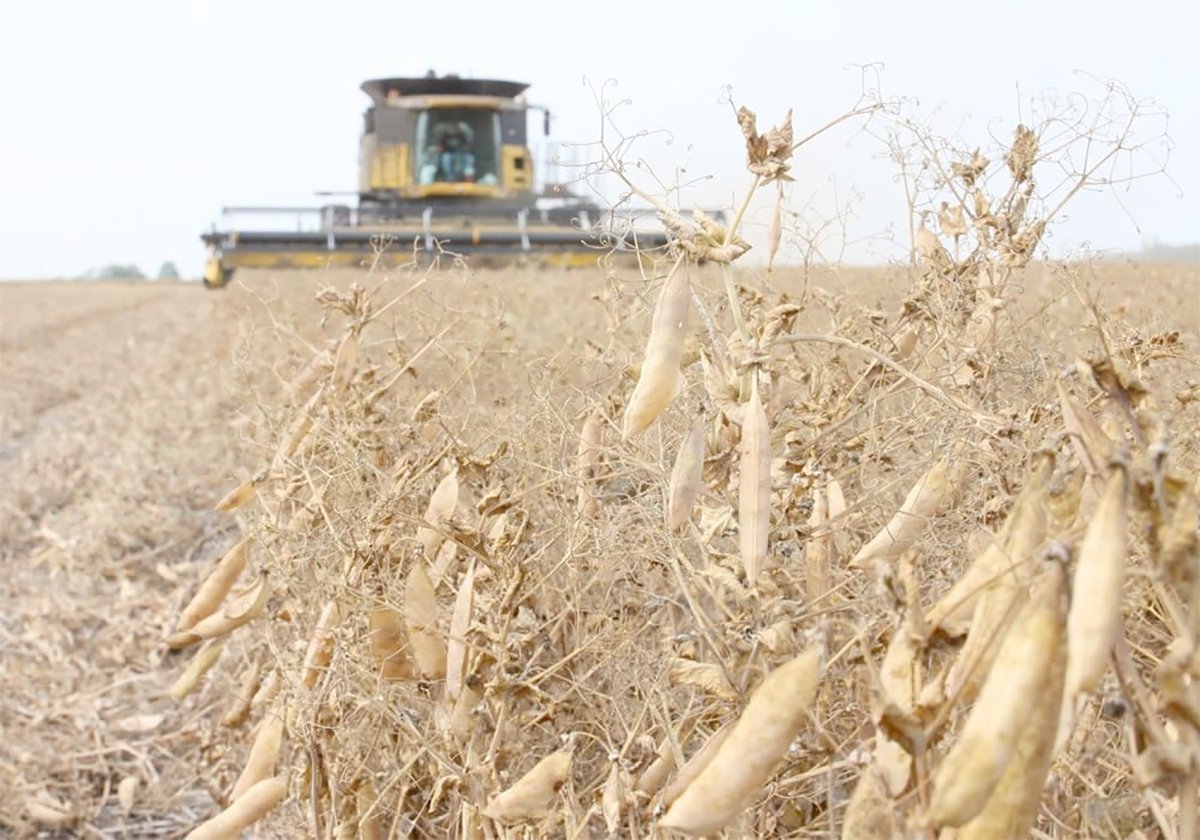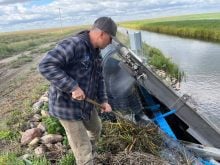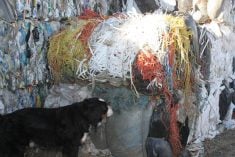Selenium has been the buzz word lately as the future of coal mining is debated in Alberta.
It is a byproduct of extracting coal from the earth and is concern for the agricultural community and environmental groups.
A scaled-down version of a previously rejected Grassy Mountain coal mine project in Crowsnest Pass has been put on the table by Northback Holdings Corp.
Read Also

Chinese, Indian tariffs take toll on pea prices
The disruption of pea exports from Canada’s largest customers will likely result in slow pea exports for the remainder of the crop year.
Environmental concerns over wildlife and habitat health still persist, despite a 40 per cent lower footprint, almost 50 percent reduction in output and a multi-tier water management strategy to avoid potential selenium contamination.
However, for environmental scientist Guy Gilron, there are several mitigating circumstances involving selenium.
“It’s not an easy issue. It can be an issue for sure, but what worries me is just painting everything with the same brush and then understanding that it is a complex chemical, and it doesn’t behave the same in every environment,” said Gilron, senior environmental scientist with Borealis Environmental Consulting.
“It isn’t simply a matter of, ‘let’s get rid of every single part per billion of selenium we have.’ Selenium isn’t like PCBs or arsenic, which can kill people. Selenium is something you actually need in your diet. We’re treating selenium like any kind of contaminant and it’s a little bit different because it does have a needed nutritional value for health.”
Multiple lines of defence are needed to ensure selenium levels produced from coal mining do not get to dangerous levels for aquatic life, birds, livestock and humans.
Selenium in coal mining comes from the waste rock.
Rock is crushed to extract coal, increasing the surface area. The remaining rock must be stored so that it will not release too much selenium.
A combination of various principles can be used, including :
- Clean water diversions.
- Selective handling and placement of waste rock.
- Engineered placement of material to limit exposure to oxygen and water (suboxia).
- Dry stacking methods that prevent selenium from being oxidized and becoming mobile in the aquatic environment.
Antiquated methods such as those in Elk Valley more than a century ago saw selenium levels far exceed provincial guidelines for fish and wildlife protection. Elk Valley Resources is currently dealing with the problem and was recently levied a $3.6 million fine, according to an article in the Western News publication from Montana.
“If you store it the way they’ve stored in the Elk Valley for 100 years, you’re going to get a lot of selenium. If you back fill it into the pit where you took it from, and you cover it, you’re going to go get a lot less leakage of selenium into your receiving environment,” said Gilron.
“What you want to do is you want to design your mine and your management system of waste rock to make sure you manage it so that selenium isn’t as high as it could be. If you still have high selenium, then you would go to a treatment system. When you start designing the mine, you have to think about, how are we going to manage selenium? You don’t wait until it gets to be a problem, and then go, ‘oh my God, we’ve got to buy a $17 billion treatment system to remove the selenium that we could have avoided having leach in in the first place.”
Treatment technologies used for selenium removal from industrial effluents include filtration, membrane separation, resins, biological reduction, biological oxidation, chemical oxidation, photolysis and elctrochemical reduction.
Studies have shown that the various technologies reduced selenium concentrations in the Trend Mine from 130 ug/L to 5 ug/L (Wastewater Digest) and the Conuma Brule Mine from approximately 200 ug/L to 20 ug/L (Kona & Atuke 2022).
A 2020 study by Golder Associates Ltd. about the effectiveness of selenium-reducing technologies showcased 30 diverse locations across North America. Not all selenium treatments are considered the same nor how it reacts in different environments.
“Selenium isn’t the same in every environment, just like just like any other salt or metal, any kind of material, behaves differently in different environments. If the water has a low pH or a high pH or has higher alkalinity or low alkalinity, that substance behaves differently. It’s not simply a matter of applying the same technology or the same part per billion in one environment to another,” said Gilron.
“It’s not a plug and play system where we can just apply the same thing we did in Idaho that we do in Alaska because in Alaska it’s a lot colder, you’re not going to get microbial activity in Alaska like you would in Idaho because of the temperature. It could be humidity, it can be a number of different things. You can’t apply every technology at every mine. You have to choose the right technology that’s going to work.”
National thresholds have been identified on acceptable selenium levels for aquatic life in waters, which are then extrapolated to humans, livestock and terrestrial wildlife.
Studies that are used to derive health benchmarks for selenium in drinking water applicable to livestock and human consumption support 50 parts per billion as the relevant drinking water guideline, nearly 25 times higher than the surface water guideline applicable to aquatic life in Canada, according to the Canadian Council of Ministers of the Environment in 2009 and Health Canada 2014.
“I don’t think it’s an easy issue. it can be an issue, for sure, but, but it’s only an issue if it’s really an issue,” said Gilron, who with colleague Gord McKenna did work for the Coal Policy Committee.
“I wouldn’t expect any coal project will go forward without a proper selenium management plan. That’s something I’ve advocated. We stressed that selenium management planning is a number-one priority. If it’s something we’re concerned about, contaminated drinking water or contaminated fish, we definitely want to keep an eye on that. But just to say it’s a problem without looking at it in more detail is kind of misleading.”















